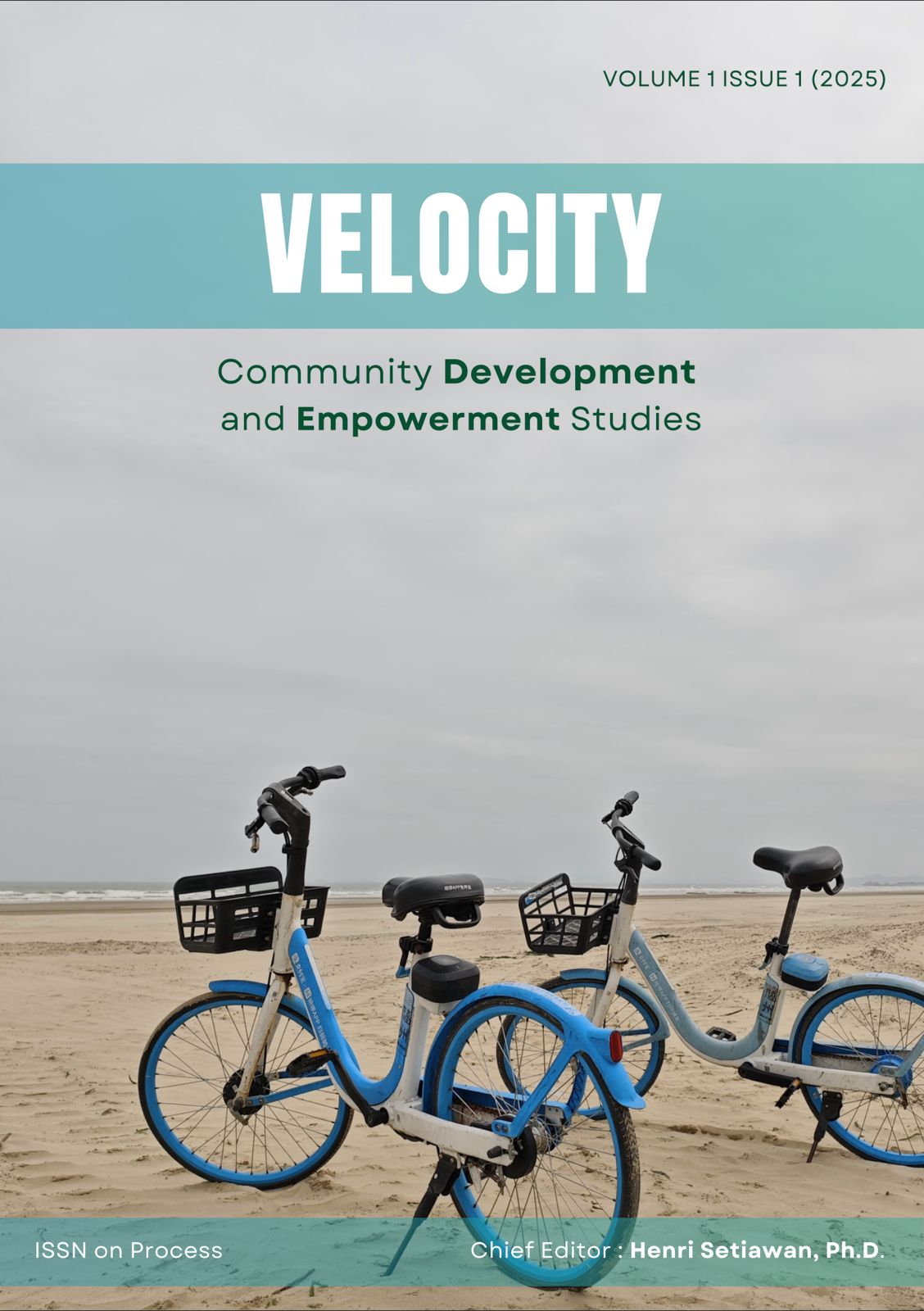Journals
-
JURNAL KESEHATAN STIKes MUHAMMADIYAH CIAMIS
E-journal ini merupakan sarana publikasi artikel karya ilmiah yang memuat jurnal-jurnal yang diterbitkan oleh institusi, program studi, unit dan lembaga di lingkunga STIKes Muhammadiyah Ciamis. Direktori ini memuat tautan ke berbagai jurnal yang mempublikasi artikel-artikel penelitian dan kajian-kajian ilmiah yang meliputi berbagai berbagai bidang keilmuan diantaranya keperawatan+ners, farmasi, kebidanan, analis kesehatan.
-
JURNAL VNUS (Vocational Nursing Sciences)
Welcome to JURNAL VNUS (Vocational Nursing Sciences)
JURNAL VNUS (Vocational Nursing Sciences) is a peer-reviewed scientific journal managed by the Diploma III Nursing Program of STIKes Muhammadiyah Ciamis. Published twice a year, in May and November, the journal serves as a vital platform for academic and professional discourse in the field of health and nursing sciences. We are committed to presenting high-quality research articles that have undergone a rigorous peer-review process to ensure academic integrity and scholarly excellence.
Scope of the Journal: JURNAL VNUS welcomes research papers from a broad range of nursing and health science topics, including but not limited to: Medical-surgical nursing, Emergency and disaster nursing, Critical care nursing, Pediatric nursing, Maternity nursing, Mental health nursing, Gerontological nursing, Community health nursing, Nursing management and leadership.
The journal is open to contributions from lecturers, students, and healthcare practitioners seeking to share their research findings with the wider academic community.
JURNAL VNUS (Vocational Nursing Sciences) is published by LPPM STIKes Muhammadiyah Ciamis and holds the electronic ISSN 2656-8799. As a biannual journal, it releases issues in May and November each year, with all content published in English to reach a broader international readership. The journal is officially accredited with SINTA 5, based on Decree No. 117/E/KPT/2024 issued by the Directorate General of Higher Education, Research, and Technology on October 15, 2024. Each article is assigned a DOI with the prefix 10.52221/jvnus, ensuring global indexing and citation.
The editorial office is located at Jl. K.H. Ahmad Dahlan No. 20, Ciamis, West Java, Indonesia. For correspondence, inquiries may be directed to the Editor-in-Chief, Andan Firmansyah, via email at andan@stikesmucis.ac.id.
Before Submission, you have to make sure that your paper is prepared using the Template (Documents to submit)
Online Submissions:
- Need a Username/Password: Registration
- Already have Username/Password: Login
- Forgot Password/Need help or Question: Contact Us
-
Asy-Syifa : Journal of Science and Technology Nursing
Asy-Syifa: Journal of Science and Technology Nursing is a nursing journal managed by the S1 Nursing Study Program of STIKes Muhammadiyah Ciamis that is published twice a year, namely in March and September. The scope of this journal includes: community nursing, maternity nursing, mental nursing, pediatric nursing, medical-surgical nursing, emergency nursing, critical nursing, nursing management, family and genetic nursing, and health promotion.
-
Nurul Ilmi : Journal of Health Sciences and Midwifery
Nurul Ilmi Journal is a midwifery journal managed by the STIKes Muhammadiyah Ciamis Midwifery Study Program with the scope of pre-marital, pre-conception, pregnancy, maternity, childbirth, neonates, infants, under-fives, pre-school children, family planning, reproductive health, adolescent health, maternal health, child health, elderly health, and menopause.
Nurul Ilmi Journal is an open-access and scientific peer-reviewed journal published annually (March and September). The journal particularly welcomes studies that aim to understand the complex midwifery care interventions that employ the rigorous designs and methods appropriate for the research question of interest. The journal publishes original papers, reviews, and short reports on all aspects of the science, philosophy, and practice of midwifery care.
It is aimed at all midwifery practitioners, lecturers, researchers, and those who manage and deliver mother and child health services and systems. It will also be of interest to anyone involved in the provision of midwifery programmes, the care of populations or communities, and those who contribute to mother and child health systems in any way.
-
Mukhtabar : Journal of Medical Laboratory Technology
Mukhtabar Journal of Medical Laboratory Technology (MJMLT) is a peer-reviewed journal published by the Research and Community Service Board of STIKes Muhammadiyah Ciamis since 2023. MJMLT is registered with the International Standard Serial Number (ISSN) with e-ISSN: 2987-0224. This journal is also registered in the CrossRef system with the DOI 10.52221/mjmlt. MJMLT is published twice a year (April and October).
-
Ad-Dawaa : Journal of Pharmacy
Ad-dawaa Journal Of Pharmacy is an official journal published by LPPM STIKes Muhammdiyah Ciamis which can be accessed and downloaded online through an open access journal.
Ad-dawaa Journal Of Pharmacy is published two times a year in the form of research articles in the pharmaceutical field with the following scientific areas: Clinical Pharmacy, Pharmacology, Biotechnology Of Pharmacy, Community Pharmacy, Pharmaceutical chemistry, Pharmacognosy, Management pharmacy.
-
Daarul Ilmi: Jurnal Pengabdian Kepada Masyarakat
Daarul Ilmi: Jurnal Pengabdian Kepada Masyarakat merupakan jurnal pengabdian masyarakat yang diterbitkan oleh LPPM STIKes Muhammadiyah Ciamis yang berkomitmen untuk mendiseminasikan hasil kegiatan pengabdian masyarakat termasuk mahasiswa dan dosen. Jurnal ini terbit pertama kali pada tanggal 24 Juni 2023. Frekuensi publikasi setiap 6 bulan yakni pada bulan Juni dan Desember. Jurnal ini memfasilitasi seluruh elemen masyarakat yang ingin mempublikasikan hasil kegiatan pengabdiannya kepada masyarakat dengan topik-topik penyuluhan, pemberdayaan, pendampingan atau Pengembangan masyarakat.
-
Velocity: Community Development and Empowerment Studies
 Velocity: Community Development and Empowerment Studies is a leading peer-reviewed journal dedicated to exploring the theory and practice of community development and empowerment across diverse contexts. Since its inception, Velocity has provided a platform for innovative research, critical dialogue, and progressive thinking aimed at fostering inclusive and sustainable community transformation. The journal adopts a broad and interdisciplinary approach to community development—encompassing social policy, participatory planning, grassroots activism, capacity building, and empowerment strategies that directly influence the well-being and resilience of communities. We especially welcome articles that challenge conventional paradigms, document transformative practices, and critically examine the intersections of community development with equity, justice, and sustainability.
Velocity: Community Development and Empowerment Studies is a leading peer-reviewed journal dedicated to exploring the theory and practice of community development and empowerment across diverse contexts. Since its inception, Velocity has provided a platform for innovative research, critical dialogue, and progressive thinking aimed at fostering inclusive and sustainable community transformation. The journal adopts a broad and interdisciplinary approach to community development—encompassing social policy, participatory planning, grassroots activism, capacity building, and empowerment strategies that directly influence the well-being and resilience of communities. We especially welcome articles that challenge conventional paradigms, document transformative practices, and critically examine the intersections of community development with equity, justice, and sustainability.
Aligned with the global development agenda, Velocity is firmly committed to supporting the achievement of the United Nations Sustainable Development Goals (SDGs). The journal invites and promotes scholarly contributions that address and reflect all 17 SDGs: No Poverty (SDG 1), Zero Hunger (SDG 2), Good Health and Well-being (SDG 3), Quality Education (SDG 4), Gender Equality (SDG 5), Clean Water and Sanitation (SDG 6), Affordable and Clean Energy (SDG 7), Decent Work and Economic Growth (SDG 8), Industry, Innovation, and Infrastructure (SDG 9), Reduced Inequalities (SDG 10), Sustainable Cities and Communities (SDG 11), Responsible Consumption and Production (SDG 12), Climate Action (SDG 13), Life Below Water (SDG 14), Life on Land (SDG 15), Peace, Justice, and Strong Institutions (SDG 16), and Partnerships for the Goals (SDG 17). By emphasizing these global priorities, Velocity seeks to bridge local action with international impact through knowledge co-creation, policy relevance, and practice-oriented insights.
Serving as a valuable resource for academics, practitioners, community leaders, policymakers, and students, Velocity connects theory with real-world application. The journal fosters collaboration across disciplines and sectors, aiming to empower communities, stimulate critical thinking, and advance inclusive, just, and sustainable development worldwide.










